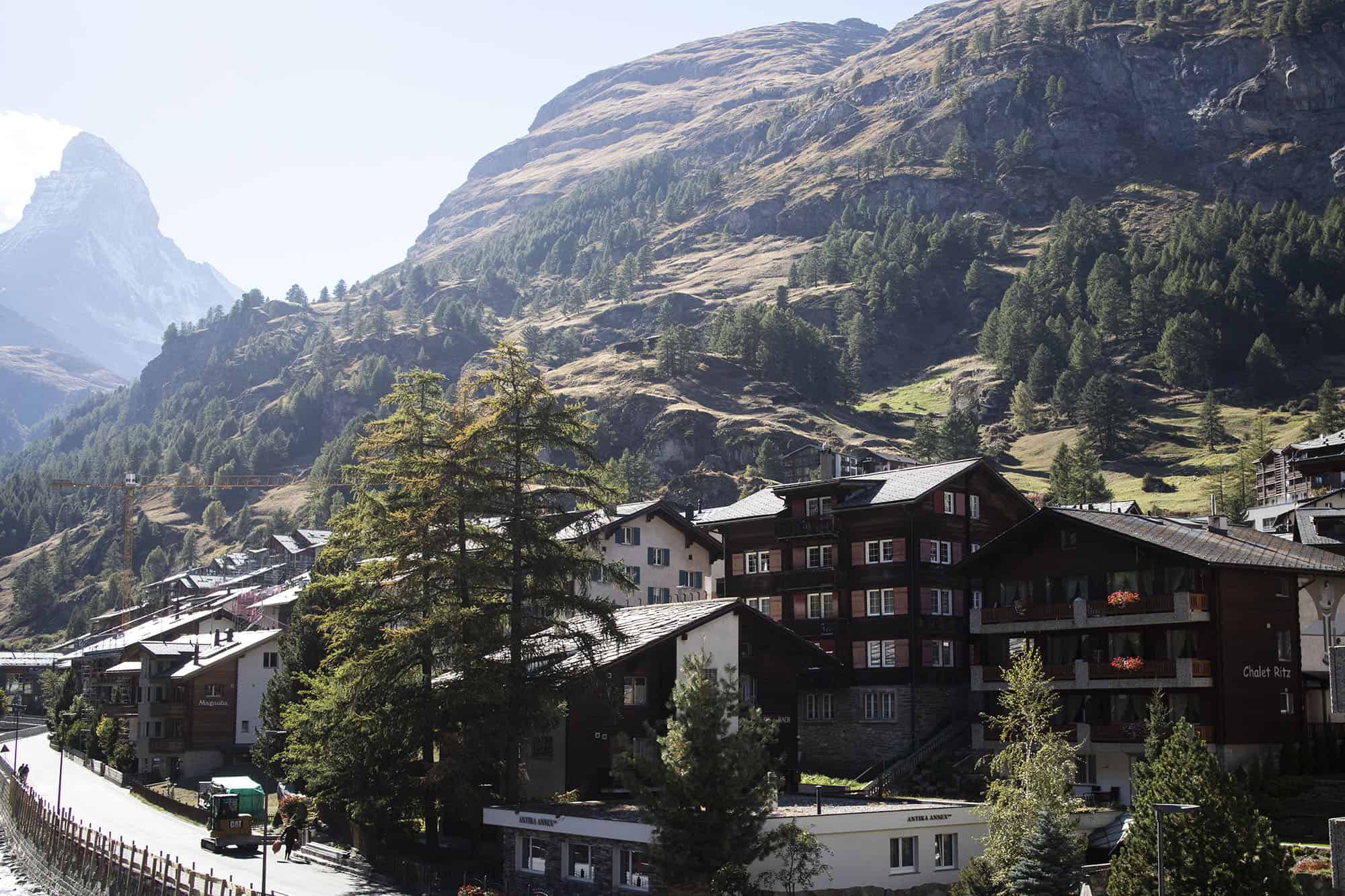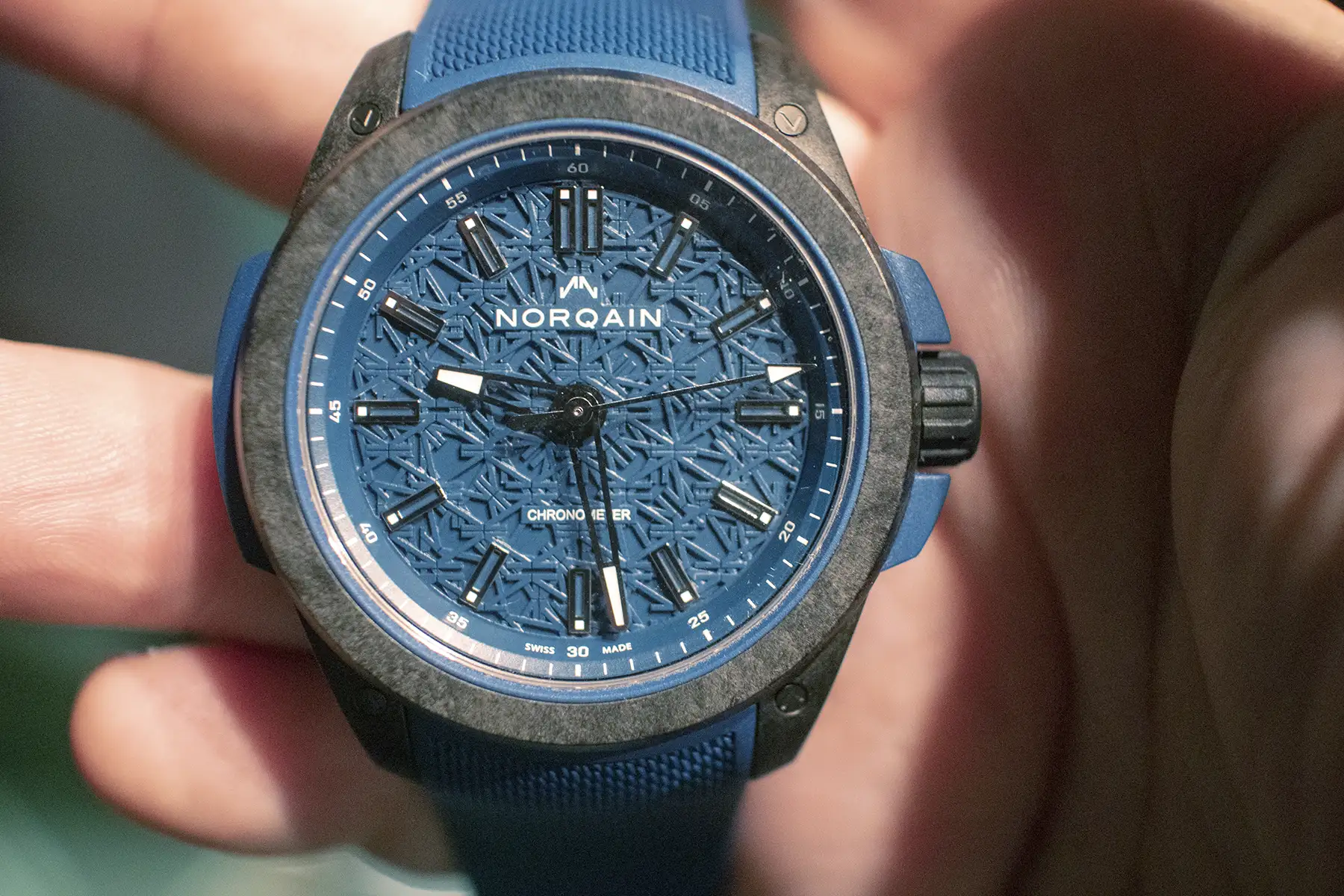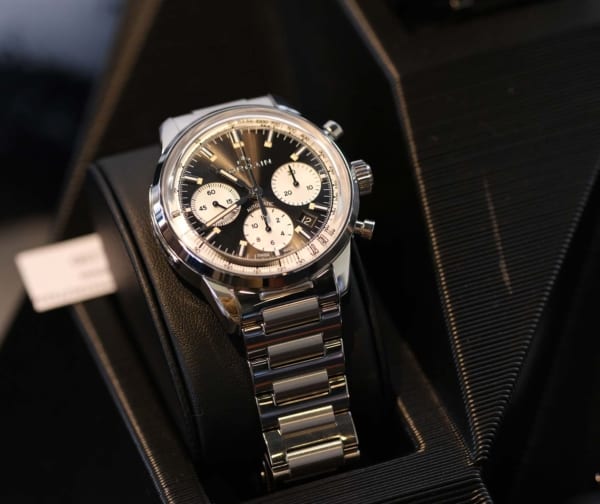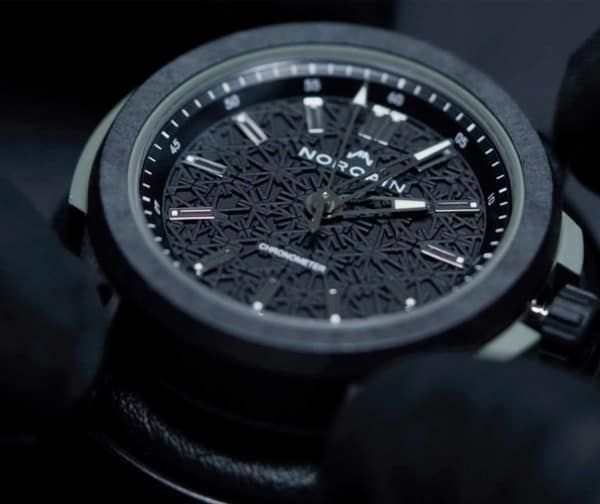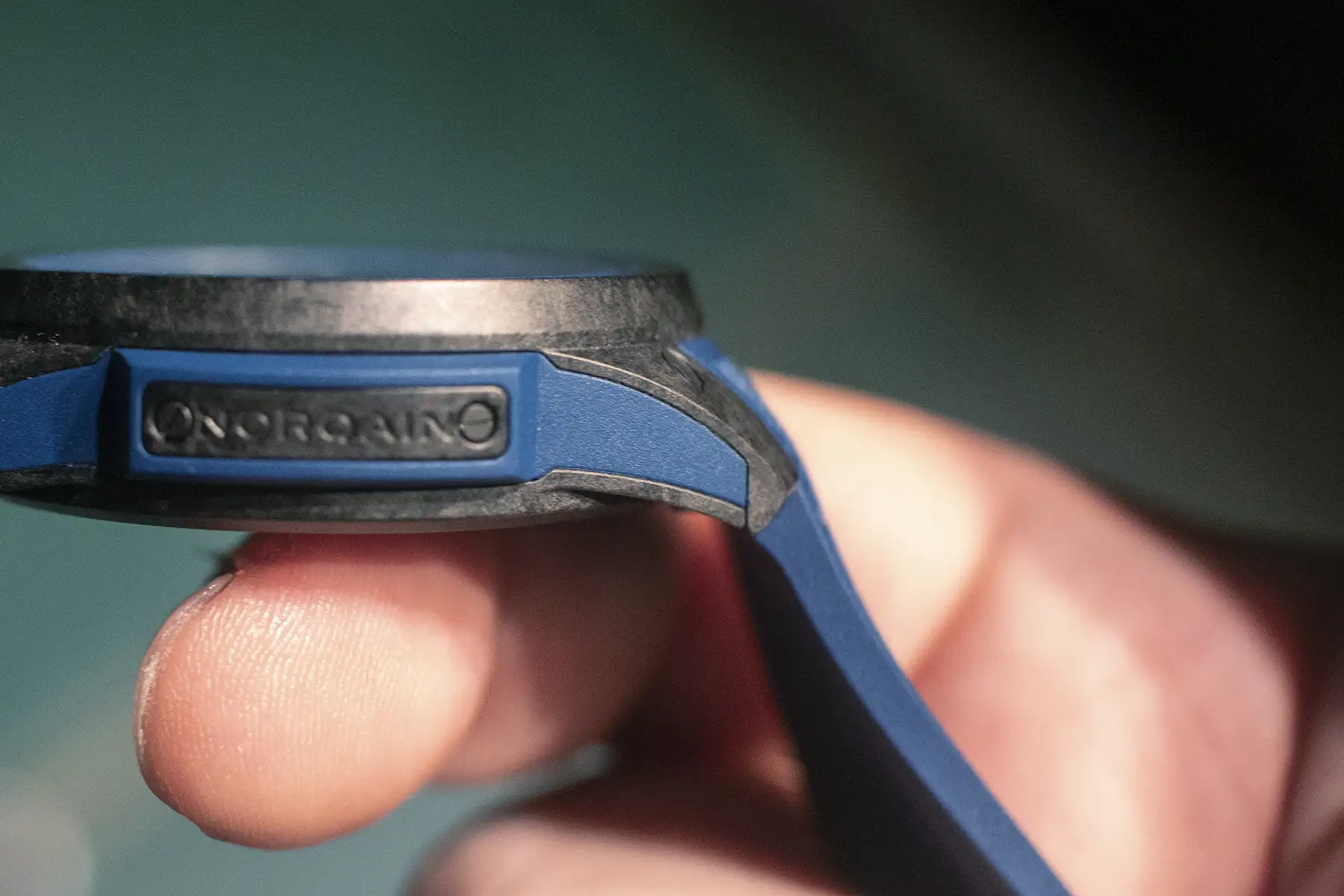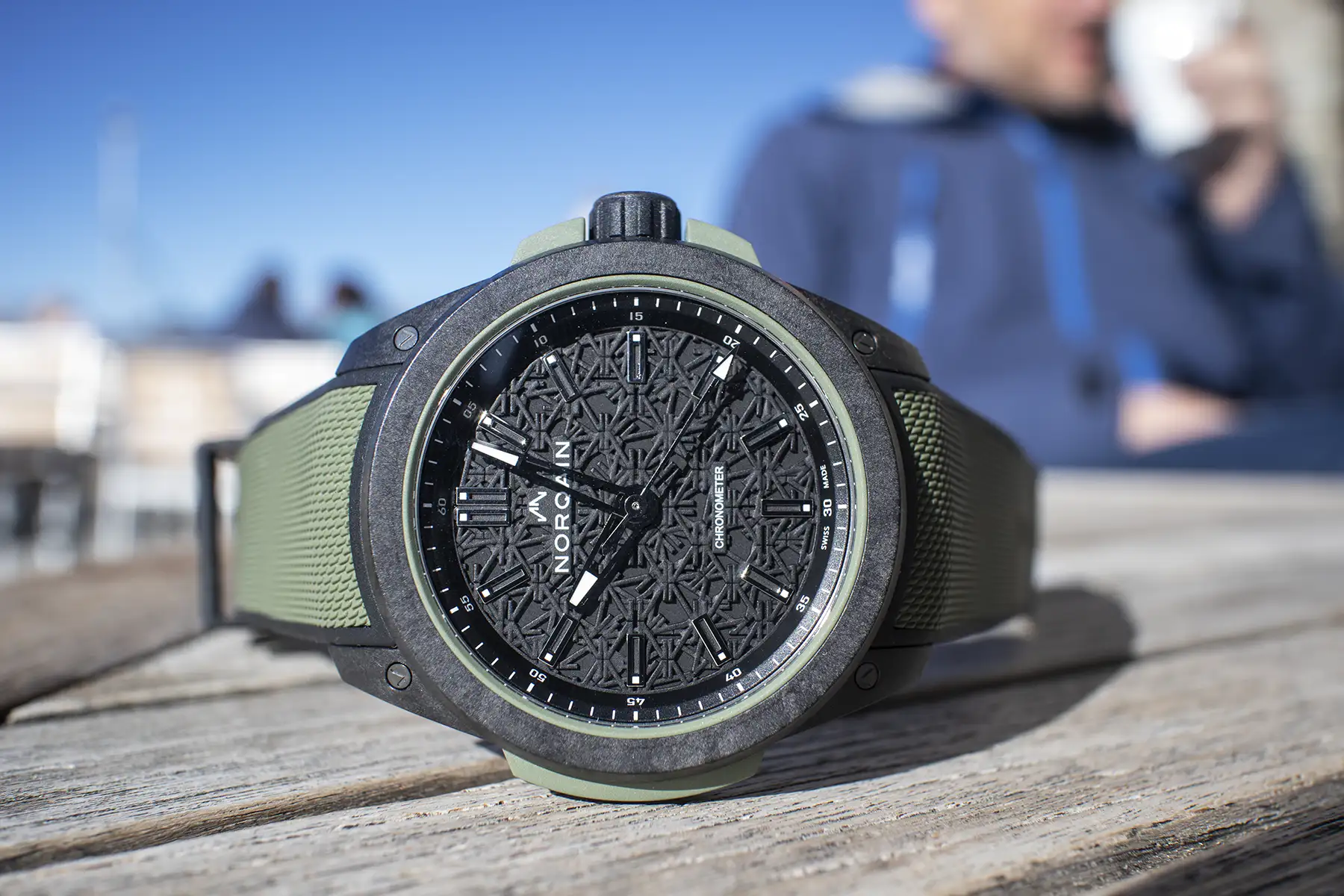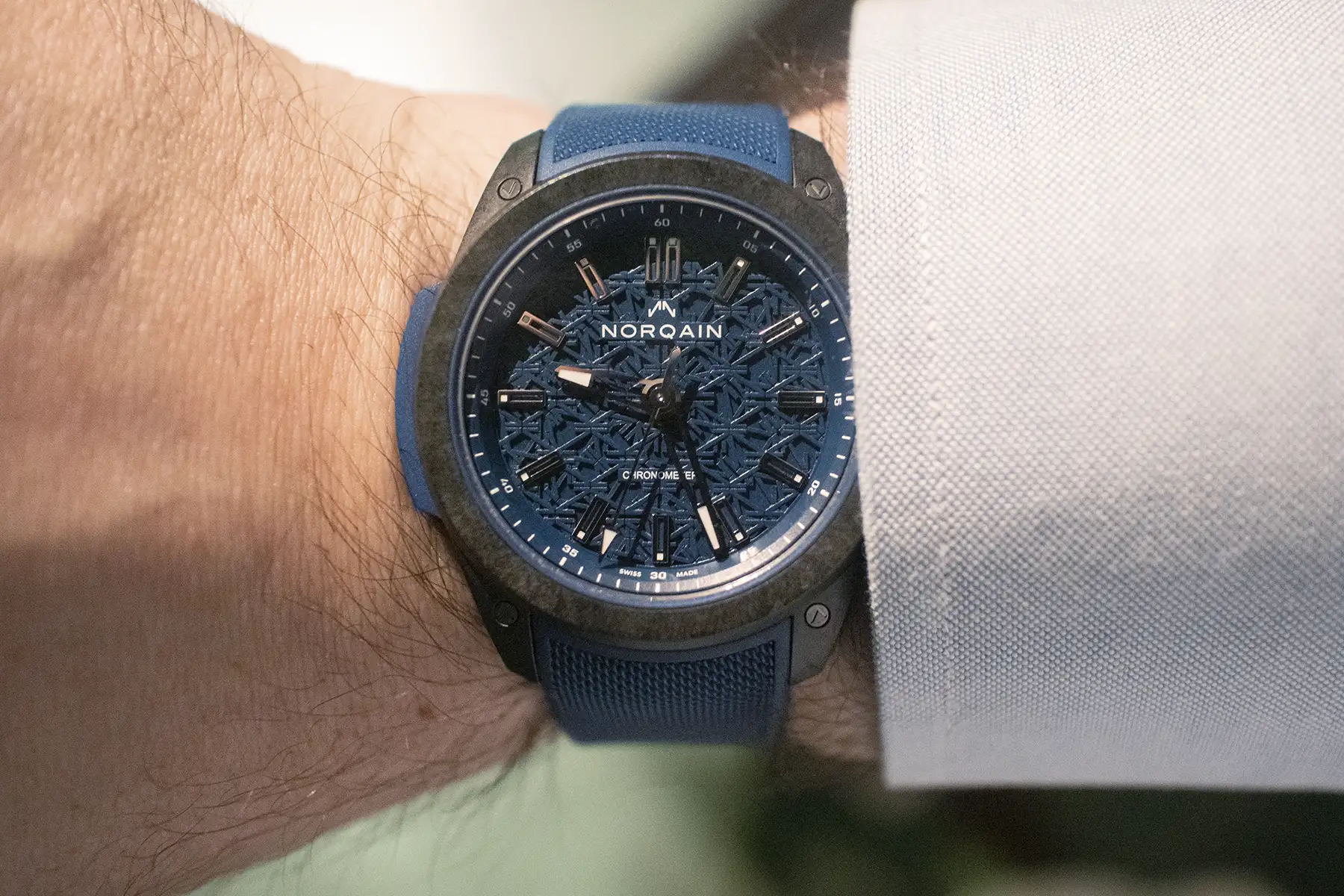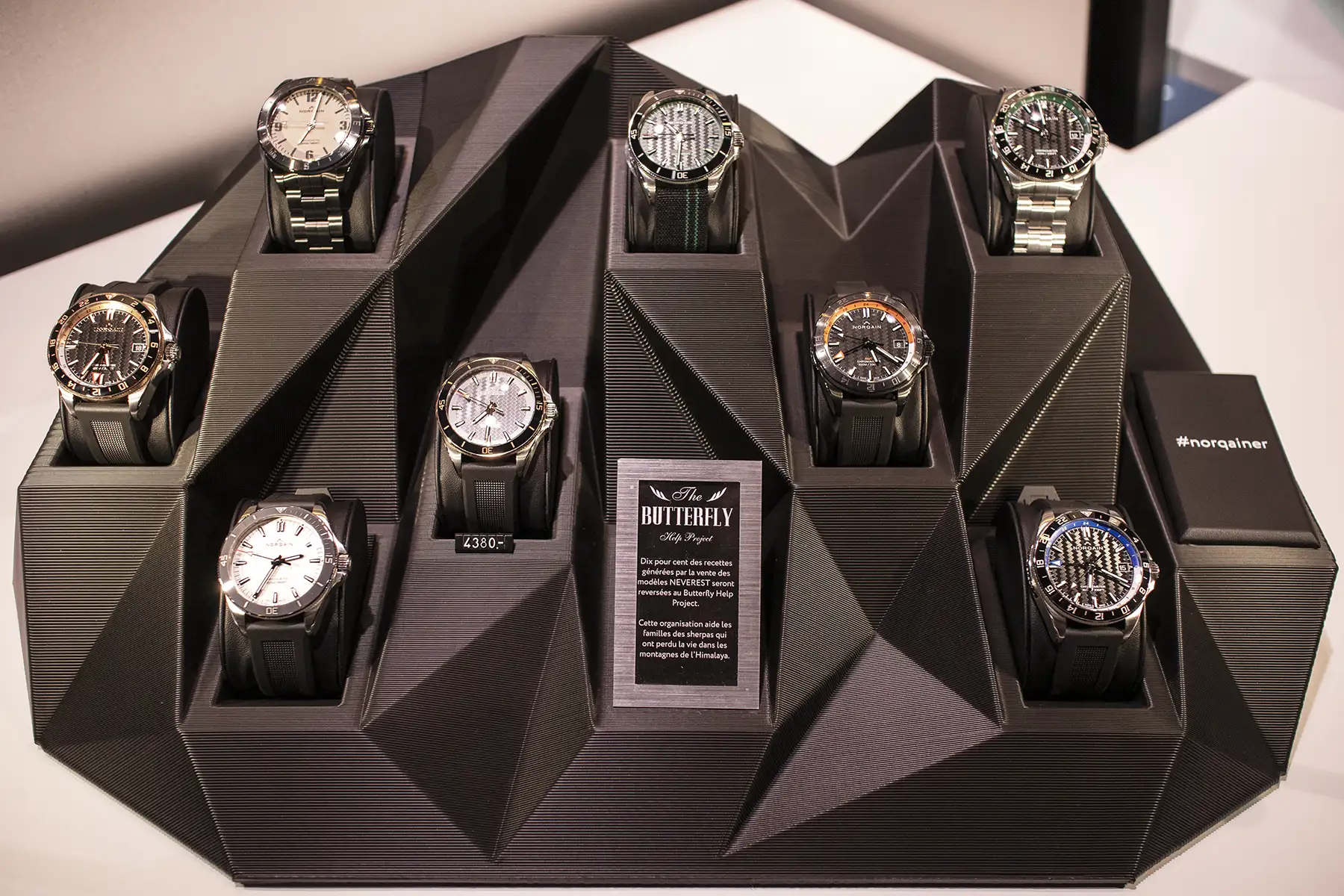Zermatt is a small village at the foot of the Swiss Alps, world famous for being the place you go if you just have to climb, ski, or photograph the Matterhorn. The Matterhorn isn’t the tallest peak in this stretch of the alps, but it’s the most iconic, with a distinct triangular shape that looms over the entire region, inspiring not just the packaging of the Toblerone candy bar, but a whole lot of tourists to come and gawk at it. It’s an awe inspiring sight, and I am not nearly jaded enough to not be giddy to see it out of the window of my hotel room when I arrive in town for the launch of the new Norqain Wild One.
The Wild One is the most ambitious release in the young life of the upstart Swiss brand. It’s the product of a new relationship with Jean-Claude Biver, the powerful and influential former executive at the LVMH Group, TAG Heuer, and Blancpain, to name a few. He’s now an advisor to the board at Norqain, and the new watch presents as immediately Biver-esque if you’ve been tracking his career and the watches that have been made under his influence. It’s sporty, contemporary, and probably a little bit risky for Norqain. But the scope of the launch event in Zermatt underscores their confidence that they have a winning product on their hands.
Zermatt is not an obvious choice for a splashy watch release, but it’s right at home for Norqain. First and foremost, it’s the home of their first dedicated boutique, which sits within walking distance (everything is within walking distance in Zermatt) of Breitling and Hublot boutiques, as well as authorized dealers for Rolex, Patek, and others. Like other Swiss tourist destinations, this one caters to visitors who might want to mark their experience here with a luxury watch. But these high end boutiques sit well off the beaten path – the village is isolated and not easy to reach. From the Zurich airport, you take two trains to reach Zermatt, the second of which winds its way slowly into higher altitudes as it passes postcard perfect towns that feel almost removed from time.









 Featured Videos
Featured Videos




